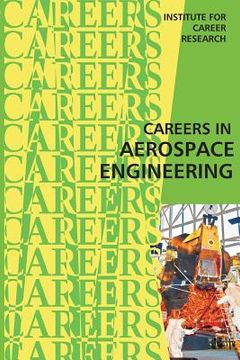Synopsis "Careers in Aerospace Engineering (in English)"
AEROSPACE ENGINEERS DESIGN AIRCRAFT and spacecraft, and supervise the manufacturing and testing processes. They use advanced physics and mathematics, and work with state-of-the-art equipment and computer programs to stay on the cutting edge of design technology. Many aerospace engineers work in the aircraft industry, while others work for the National Aeronautics and Space Administration (NASA), or the Department of Defense. To become an aerospace engineer requires at least a bachelor's degree, and most engineers earn a master's degree. Study can be focused in aerospace engineering, but another branch of engineering, such as mechanical or electrical, is also acceptable. Entry-level engineers do not need to be licensed, but after four years of work experience it is advisable to take the professional licensure exam. There is also a place in this field for those who prefer to work with their hands. While aerospace engineers do most of their work on the computer, aerospace engineering technicians do the hands-on work. They follow the specifications of the engineers and meet with them regularly to discuss operational details, and to review product test results. They may use computer simulations to test new designs, but they are also involved in manufacturing and installing actual parts and systems. The educational requirements for technicians are less rigorous than those for engineers, and there are a couple of choices. Some employers require a diploma or certificate in engineering or aerospace technology from a vocational program. Other employers want to see an associate degree. Either way, it only takes a couple of years to get the necessary training. Still other employers offer on-the-job training programs that allow candidates to begin work without a degree. That is extremely easy entry for a career where it is possible to earn as much as $80,000 a year. Certification by the Federal Aviation Administration is not necessary but it can help your job prospects. The American spacecraft Apollo 11 made history when it sent the first man to the moon. Astronaut Neil Armstrong described his walk on the moon as "one small step for a man, one giant leap for mankind." The crew of astronauts was well aware of how many people - including the aerospace engineers and technicians - had played a part in the successful lunar landing, and they decided not to include their own names on Apollo 11's mission insignia so that it would be representative of everyone who had worked on the mission. The significance of a lunar landing and of any spacecraft activity is not only scientific but also political. Launching a rocket successfully is a sign of scientific, military, and financial power that often commands the attention of the whole globe. In recent years, launching rockets has been considered a sign of a nation's nuclear weapons capacity, and can cause other nations to react with concern. Aerospace engineers and technicians should thus be considered important not only for their scientific achievements, but for the international political significance of their actions. Although the US government has reduced its involvement in aerospace endeavors, the rest of the world and, more importantly, private industry have not. More and more companies in the private sector are investing in technologies that will permit people to experience real space travel - beyond our own orbit. We are on the threshold of a new era of advanced space exploration. Being a part of such exciting and important projects is a dream come true for anyone with a creative and scientific mind.

